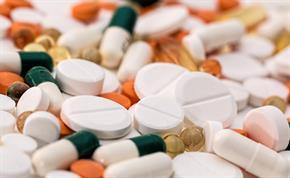
If you work in a patient-facing role, it’s likely that you manage medicines every single day.
Paramedics routinely administer medicines that are otherwise restricted by law. Most medicine law is controlled within the Medicines Act 1968 and the Misuse of Drugs Act 1971. These acts affect all health professionals, including paramedics, who handle medicines, as they set out who can do what with which medicines. If we were to act in any way that breaches the regulations within these acts, we would be breaking the law and committing a criminal offence.
We get a lot of questions about the dos and don’ts, particularly around morphine, so we thought we’d share some of the top Q&As here for you.
Q: Can I carry morphine on my belt?
A: No; as reported in Need to Know, the Trust’s Medicine management policy states that controlled drugs can’t be kept on your belt or in your pocket. This is because historically, there have been a lot of losses or breakages.
Q: Is it OK to leave morphine in a vehicle overnight?
A: No; you can’t leave any controlled drugs in a vehicle overnight. You can keep morphine in the closed metal box, in a closed car boot, during your shift, but after the shift when you are no longer responding you must remove it. You are able to to transport controlled drugs in your vehicle, but not to store it (storage should always be in an individual safe at the station).
Q: Does individual possession of morphine at EEAST mean that it’s my morphine?
A: No, it’s Trust morphine.
Q: Can I take out-of-date medication back to hospital?
A: Historically that was the procedure in Norfolk, Suffolk & Cambridgeshire, but as per the new clinical standard operating procedure (05), Disposal of out of date drugs and denaturing of controlled drugs, all drugs should be disposed of at station.
Q: What should I do if a patient has an adverse drug reaction, or if I make a medicines error (for example I gave an incorrect dose of a drug, used an incorrect route of administration, or administered an incorrect drug)?
A: Assess the patient and treat accordingly, taking guidance from the Clinical Advice Line if required. Please also make sure to inform all other healthcare professionals involved in the patient’s care, as well as a duty locality officer. You’ll then need to complete a Datix, and, in the case of adverse reactions, a Yellow Card if you have time. You can read more about this in CSOP 03.
Q: What is a Yellow Card?
A: The Yellow Card scheme helps the Medicines & Healthcare Products Regulatory Agency (MHRA) to monitor the safety of healthcare products in the UK to make sure they are acceptably safe for patients. Reports can be made for all medicines, and the scheme collects information on suspected problems or incidents involving:
A Yellow Card incident report should be filled in on the Yellow Card website anytime an adverse drug reaction occurs when treating a patient. Any clinician can submit a report, but here at EEAST, all drug reaction DATIXs are reviewed by the medicines management lead who will submit a report on the clinician’s behalf if they haven’t had time to do so.
Q: Do I have to transport a patient to a hospital after oral administration of paracetamol or ibuprofen?
A: No; there is no requirement to convey these patients unless a medical condition requires it.
Clinical standard operating procedures (CSOPs) should be printed off and kept as a hard copy on station, either on a noticeboard or in a place that’s easily accessible for all colleagues. They are short documents, and most have handy flowcharts that show the most important information. The Medicines management policy is more complex – this is available on East24 but doesn’t need to be available as a hard-copy on station.
Q: Do I need to label injectable medication, which is either mixed or drawn into an unlabelled syringe?
A: Yes; this is for safe administration of medication to alert people to the contents of the syringe or fluid bag. It indicates any additives and looks to reduce harm of mis-administration or too much medication. Further information can be found in CSOP 10.
Got any more questions? Contact medicinemanagement@eastamb.nhs.uk